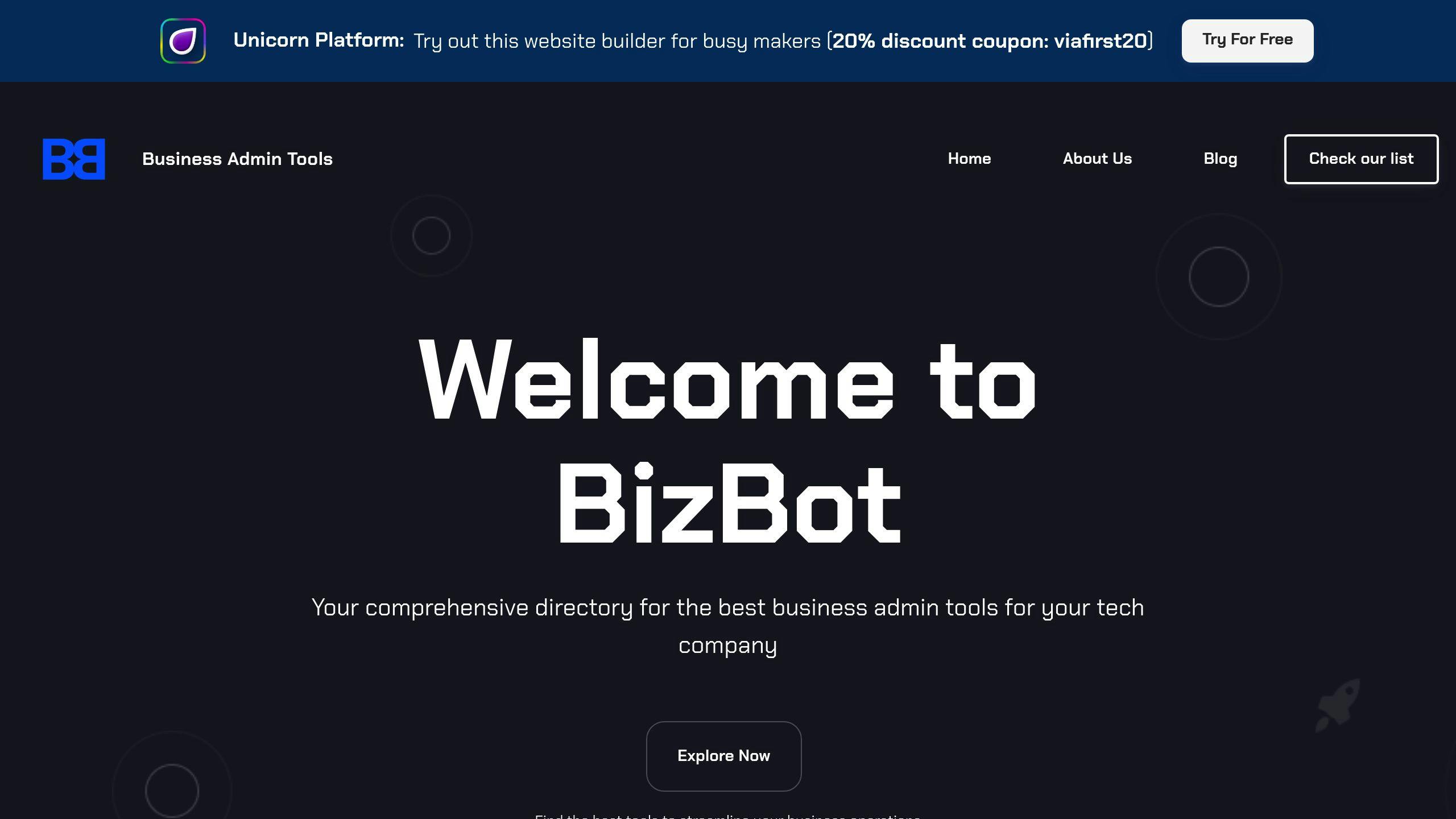Want to let employees use their own devices for work? Here's how to set up a Bring Your Own Device (BYOD) policy:
- Define allowed devices (e.g. iOS, Android, Windows)
- Set security requirements (encryption, MDM software, etc.)
- Create clear usage rules and data ownership policies
- Establish device management procedures
- Train employees on security best practices
- Plan for lost/stolen device scenarios
Key benefits:
- 34% productivity boost (Frost & Sullivan)
- Cost savings ($415M over 4 years for Cisco)
- 45% of employees feel more productive (Gartner)
Main challenges:
- Security risks ($3.86M average data breach cost)
- Compliance with data protection laws
- Managing diverse devices/systems
A solid BYOD policy balances flexibility and security. Use MDM software, encrypt data, require strong authentication, and clearly communicate expectations to employees.
Related video from YouTube
Why Use BYOD
BYOD isn't just a trendy acronym. It's got some serious perks:
- Productivity Boost: People work better on devices they know. How much better? Frost & Sullivan found BYOD can save 58 minutes per day. That's a 34% productivity jump!
- Money Saver: Companies can cut down on hardware costs. Take Cisco: their BYOD program saved them a whopping $415 million over four years.
- Happy Employees: BYOD can make work life better. Gartner's survey showed 45% of employees felt more productive with their own devices.
What to Think About First
Before you jump on the BYOD bandwagon, pause and consider:
Security Risks: Personal devices can be like open doors to your network. And those doors can be expensive. IBM reported that data breaches cost an average of $3.86 million in 2020. Ouch.
Legal Stuff: BYOD policies need to play nice with data protection laws like GDPR and CCPA. Break these rules, and you could be looking at fines up to €20 million or 4% of global turnover under GDPR. Not pocket change.
Device Management: How will you handle all those different devices and operating systems? Microsoft's Enterprise Mobility + Security suite is one way to tackle this challenge.
Who Pays for What?: Figure out how to handle costs like data plans or software licenses. Some companies, like Salesforce, give employees a BYOD stipend.
BYOD can be great, but it's not a decision to make lightly. Think it through, plan carefully, and you could be on your way to a more flexible, productive workplace.
BYOD Basics
What is BYOD
BYOD stands for Bring Your Own Device. It's a policy where companies let employees use their personal gadgets for work. We're talking smartphones, tablets, laptops - you name it.
Why's it catching on? Simple. It boosts productivity. A Frost & Sullivan study found that BYOD can save employees 58 minutes daily. That's a 34% productivity bump!
Pros and Cons
BYOD isn't all sunshine and rainbows. Let's break it down:
The Good Stuff:
- Saves Money: Cisco saved a whopping $415 million over four years with BYOD.
- Gets More Done: People work better on devices they know inside out.
- Happy Employees: Gartner says 45% of workers feel more productive with their own devices.
The Not-So-Good Stuff:
- Security Headaches: Personal devices can be weak spots. IBM says data breaches cost $3.86 million on average in 2020.
- Legal Maze: BYOD policies need to play nice with laws like GDPR and CCPA.
- IT Juggling Act: Imagine managing a zoo of different devices and systems.
Who's in the BYOD Game?
BYOD isn't a one-person show. It takes a village:
1. IT Department
These are your tech wizards. They:
- Set up fancy Mobile Device Management software
- Make sure lost devices can be wiped remotely
- Keep the virus-busting software up to date
2. Human Resources
HR's got their hands full:
- Spreading the word about BYOD rules
- Dealing with rule-breakers
- Teaching everyone BYOD best practices
3. Legal Team
The law folks make sure:
- Everything's above board with device use laws
- Company secrets stay secret
- Everyone knows who owns what data
4. Management
The big cheeses decide:
- Who gets to use their own devices
- Which gadgets and apps make the cut
- Who pays for what (data plans, software, etc.)
5. Employees
The BYOD users need to:
- Stick to the company's device rules
- Yell "Help!" if their device goes missing
- Keep work and driving separate
Main Policy Parts
A solid BYOD policy protects company data while giving employees flexibility. Here are the key elements:
Which Devices to Allow
Define permitted devices. This affects security, support, and system compatibility.
IBM's BYOD program allows iOS, Android, and Windows devices, but not Blackberry. This choice streamlined support and boosted security.
Required Safety Measures
Outline must-have security measures for BYOD devices:
- Strong passwords or biometric authentication
- Regular software updates
- Company-approved antivirus software
- Work data encryption
Salesforce requires MDM software on all BYOD devices. This lets them remotely wipe corporate data if a device is lost or stolen.
Rules for Device Use
Set clear guidelines for using personal devices at work:
- Acceptable use of company resources
- Data and app access restrictions
- Device use rules in specific situations
Cisco bans personal cloud storage for work files. They provide a secure company alternative instead.
Data Rights and Privacy
Tackle data ownership and employee privacy:
- Company's data access rights on personal devices
- Device usage monitoring policies
- Personal data handling during device wipes
Google uses containerization to separate work and personal data. This lets them manage work info without touching personal content.
Who Fixes What
Define device maintenance, repair, and support responsibilities:
- Who pays for repairs or replacements
- IT support level for personal devices
- Handling software conflicts
VMware gives employees a stipend to buy devices, but employees handle maintenance. IT only supports work-related software, clearly dividing responsibilities.
sbb-itb-d1a6c90
Setting Up Security
Let's talk about protecting your company's data when you let employees use their own devices for work. It's a big deal, and you need to get it right.
Login Security
First up: make it tough for the bad guys to get in. Use multi-factor authentication (MFA) on all BYOD devices. It's like adding a second lock to your front door.
Microsoft found that MFA cut down account hacks by 99.9%. That's huge!
Data Protection
Next, encrypt your sensitive stuff. It's not optional. Encrypt data when it's sitting still and when it's moving around.
Pro tip: Get your team to use VPNs. They're great for keeping things safe, especially when someone's working from a coffee shop Wi-Fi.
Network Safety
Be picky about who gets on your network. Use Network Access Control (NAC) to keep out devices that shouldn't be there.
When Cisco started using NAC, they saw 50% fewer security problems from unauthorized devices.
Device Management Tools
Mobile Device Management (MDM) software is your new best friend. It lets you:
- Keep tabs on all the devices on your network
- Make sure everyone's following the rules
- Wipe work data if a device goes missing
Did you know? 43% of employees have been targeted by phishing attacks on their personal devices. Yikes!
Security Problem Response
When things go wrong, you need a plan. Here's the quick version:
1. Act fast: If there's a breach, kick that device off the network right away.
2. Size it up: Figure out what got hit and how bad it is.
3. Contain it: Use your MDM to wipe work data from the problem device.
4. Spread the word: Tell everyone who needs to know - the device owner, IT folks, maybe even the legal team.
5. Learn from it: Once it's all over, take a good look at what happened and make your security even better.
Rolling Out the Policy
Implementing a BYOD policy isn't just about writing rules. It's about getting your team on board. Here's how to make it happen:
Telling Employees
Don't just fire off an email and hope for the best. Here's how to spread the word:
- Hold a company-wide meeting to explain the benefits and tackle concerns head-on
- Follow up with smaller group sessions for specific questions
- Create a detailed FAQ document
Paulyne Sombret, a Hybrid Work expert, says: "A clear, detailed BYOD policy is crucial for setting boundaries and expectations."
Required Learning
Your team needs to know their stuff, especially when it comes to cybersecurity. Set up a solid training program:
- Cover the basics: password hygiene, spotting phishing attempts, and safe browsing
- Offer device-specific training for iOS, Android, Windows, and Mac
- Do a deep dive into the BYOD policy, explaining the "why" behind each rule
"For a BYOD policy to work, your employees need to get it." - SimpleMDM
How to Sign Up
Make joining the BYOD program a piece of cake:
1. Self-Service Portal
Set up an online platform where employees can easily register their devices.
2. IT Support Hours
Have IT staff available at specific times to help with enrollment.
3. Guided Setup
Create step-by-step guides for installing necessary security software.
Checking Compliance
Trust your team, but keep an eye on things:
- Use Mobile Device Management (MDM) software for regular compliance checks
- Set up your MDM to automatically flag non-compliant devices
- Schedule quarterly check-ins to discuss policy adherence and iron out any issues
As Preferred Communication Systems puts it: "Expect issues to pop up and be ready to tackle them. That's the best way to keep things from spiraling."
Using BizBot for BYOD

BYOD policies can be tricky. But with the right tools, you can make it work. That's where BizBot comes in.
BizBot is a directory of business tools that can help you manage your BYOD setup. It's packed with software for accounting, banking, HR, legal stuff, and more. And the best part? These tools are easy to use, whether you're a freelancer or running a growing company.
So, how can BizBot help with your BYOD policy? Let's break it down:
1. Device Management
BizBot lists Mobile Device Management (MDM) tools. These help you keep tabs on employee devices and make sure they're following your BYOD rules.
2. Security
You'll find security software on BizBot to protect sensitive data on personal devices. Think antivirus programs, VPNs, and encryption tools.
3. HR Tools
BizBot's HR systems can track who's using BYOD and manage related training.
4. Legal Resources
Need to make sure your BYOD policy follows data protection laws? BizBot's got legal services for that.
5. Expense Management
Use BizBot's accounting software picks to track BYOD expenses like stipends or reimbursements.
6. Subscription Management
BizBot can help you keep an eye on software license costs for BYOD devices.
Wrap-Up
Let's recap the key points for setting up a solid BYOD policy:
Define Your Scope
Be clear about which devices and operating systems you'll allow. IBM, for example, gives the green light to iOS, Android, and Windows devices, but not Blackberry. This keeps things simple for support and beefs up security.
Lock It Down
Your company's data is precious. Protect it. Microsoft's data shows that multi-factor authentication (MFA) cuts account hacks by a whopping 99.9%. Make MFA a must for all BYOD devices.
Set Clear Rules
Spell out how devices should be used, who owns what data, and how privacy works. Cisco, for instance, says "no" to personal cloud storage for work files and offers a secure company option instead.
Use Management Tools
Mobile Device Management (MDM) software is your friend. It helps you keep an eye on BYOD devices and keep them secure. Cisco saw 50% fewer security headaches from unauthorized devices after they started using Network Access Control (NAC).
Train Your Team
Don't just hand out a policy - explain it. Show your team the ropes on BYOD and cybersecurity best practices. As John Martinez, a Technical Evangelist, puts it:
"With the right policies and security actions, you can let your employees take advantage of the convenience of their own devices while ensuring strong BYOD security."
Be Ready for Trouble
Have a game plan for security breaches. Know how to quickly boot compromised devices off your network and stop data leaks in their tracks.
Keep It Fresh
Your BYOD policy isn't set in stone. Review it regularly. As tech and work habits change, your policy should too. Listen to what your employees have to say and stay on top of new security threats.
FAQs
How to build a BYOD policy?
Building a solid BYOD policy isn't rocket science. Here's what you need to do:
1. Define the scope
Be crystal clear about which devices are allowed. IBM, for example, says yes to iOS, Android, and Windows, but no to Blackberry. Why? It's easier to support and more secure.
2. Lock it down
Use mobile device management (MDM) software. It's like a security guard for your devices. Salesforce makes everyone use it. If a device goes missing, they can wipe company data remotely.
3. Set the rules
Make it clear how devices should be used and what data can be accessed. Cisco, for instance, bans personal cloud storage for work files. Instead, they provide a secure company alternative.
4. Plan for the worst
What happens when a device goes missing? Have a game plan ready. This might include remote wiping and cutting off network access ASAP.
5. Talk money
Be upfront about who pays for what. Some companies, like VMware, chip in for device purchases but leave the upkeep to employees.
How to implement a BYOD policy?
Putting a BYOD policy into action isn't just about writing it down. Here's how to make it happen:
1. Get legal on board
Make sure you understand the legal side of BYOD in your area. You don't want any nasty surprises down the road.
2. Team up with HR
Work with your HR folks to tackle employee privacy concerns and stay on the right side of data regulations.
3. Bring in the IT crowd
Your IT team knows the security ins and outs. Get their input on what's needed to keep employee devices safe.
4. Train, train, train
Don't just hand out the policy and hope for the best. Make sure everyone knows the rules and how to follow them.
5. Use the right tools
MDM solutions are your friend. They help you keep an eye on BYOD devices and keep them secure.
6. Plan for goodbyes
When employees leave, you need a clear process for removing company data and access from their devices.
How to write a BYOD policy?
Writing a BYOD policy doesn't have to be a headache. Here's what to include:
1. Set the boundaries
Spell out which devices and operating systems are allowed. No room for confusion here.
2. Address the elephant in the room
Privacy is a big deal. Explain how you'll keep personal and company data separate.
3. Talk security
What security measures are required? Think encryption, multi-factor authentication, and the like.
4. Set expectations for support
What kind of IT help can employees expect for their personal devices? Make it clear.
5. Stay legal
Make sure your policy plays nice with data protection laws and industry rules.
6. Make it easy to join
Create a simple process for employees to sign up for the BYOD program.
7. Write it down
Get everything on paper before you roll it out. It'll save you headaches later.
What considerations must be made for a BYOD policy?
When you're cooking up a BYOD policy, keep these things in mind:
1. Security is king
Protect your company data like it's Fort Knox. Microsoft found that multi-factor authentication cut account hacks by a whopping 99.9%.
2. Respect privacy
Find the sweet spot between protecting company interests and respecting employee privacy. Google uses containerization to keep work and personal data separate.
3. Support matters
Be clear about what IT support you'll provide. This might include rules on keeping devices updated and which apps are okay for work.
4. Stay on the right side of the law
Make sure your policy plays nice with data protection laws like GDPR and CCPA. Legal trouble is the last thing you need.
5. Money talks
Be upfront about who pays for what. Clear guidelines on reimbursement can prevent a lot of headaches.
6. Keep control
Use tools like Mobile Device Management (MDM) software to keep an eye on BYOD devices. It's like having a digital security team on standby.


